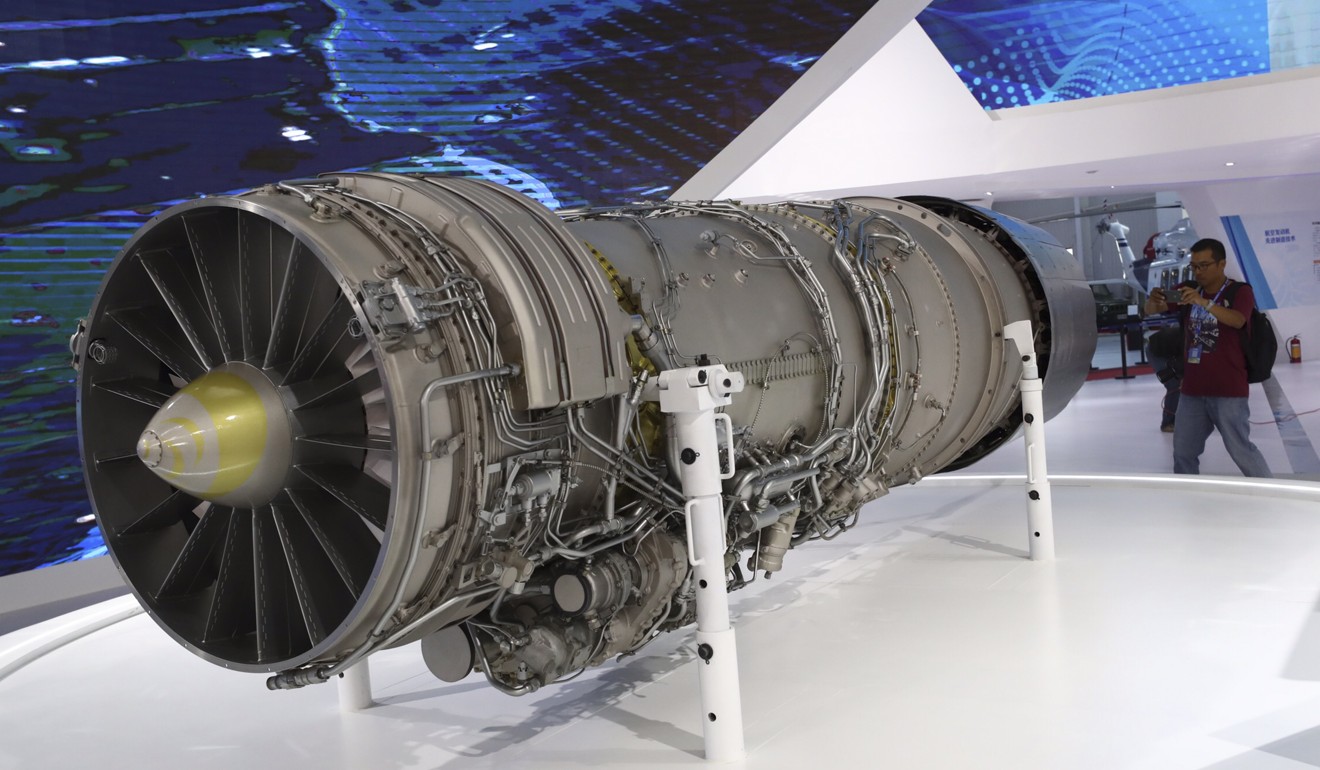Trade tensions with the United States blow hole in budget for China’s newest aircraft carrier
- Cuts and rising fighter jet development costs have slowed progress on the Type 002, military insiders say

Work on China’s newest aircraft carrier has slowed as tensions with the United States and military reform have taken their toll on the programme’s budget, military sources said.
The assessment came just a day after Beijing confirmed it was building its second home-grown aircraft carrier – its third in total.
State-run Xinhua news agency said on its microblog on Sunday that work was under way on China’s “new generation carrier”, the Type 002. Its predecessor, the Type 001A, the first domestically built vessel of its kind, was launched in April 2017. Military experts expect it will be handed over to the Chinese navy by October 1 in time for the 70th anniversary of the people’s republic.
China’s first aircraft carrier, the Kuznetsov-class Liaoning, was commissioned in 2012 after it was bought from Ukraine and refitted in China.
The Xinhua report was the first official Chinese media confirmation of the Type 002’s construction, a disclosure that means the vessel’s keel is ready to be laid, according to a source close to the Chinese military.
The newest warship will be fitted with the world’s most advanced aircraft launch system, an electromagnetic system known as EMALs, which is the same type used on the nuclear-powered USS Gerald Ford supercarrier. EMALs causes less wear and tear on planes and allows more aircraft to be launched in a shorter time.
Military insiders said work on the Type 002 had slowed because of budget cuts and the rising costs associated with the J-15, the beleaguered carrier-based fighter jet.
“China has so far still failed to develop a more advanced and powerful carrier-based fighter jet to match the Type 002 carrier,” a naval source said.
The South China Morning Post reported earlier that several sources said Beijing was developing a new carrier-based fighter jet to replace the J-15, which has had a series of mechanical failures and crashes. All of the J-15s were grounded for three months after a fatal crash in 2016. A military investigation revealed that some data relating to the flight control system had been doctored.
“Another problem that slowed down construction of the Type 002 is the long-standing short lifespans of the J-15s’ engines, even though the aircraft are now equipped with the more advanced and powerful WS-10H Taihang engines,” an insider on the carrier projects said.

New turbine technology had extended the lifespan of the WS-10 engines from 800 flight hours to 1,500, but that was still just a fraction of the more than 4,000 flight hours that General Electric’s F414 engines – used on the US’ carrier-based F-18 Super Hornets – could put in.
“The WS-10H is powerful and advanced, but its lifespan is much shorter than the American technology, meaning China needs more engines to support the operation of its J-15s. That’s costly because each WS-10 engine costs millions of yuan,” the insider said.
China plans to have four aircraft carrier battle groups in service by 2030, but those plans could change as budgets shrank and some departments were cut as a result of an unprecedented military overhaul, the insider said. Other political and economic factors were weighing on the programme, too.
“A shipbuilder had been scheduled to build another Type 002 carrier, the country’s fourth, in recent days but it was postponed ... amid the ongoing trade war with the US,” he said. “Beijing doesn’t want to upset Washington further – the economy has already slowed since the two countries started their trade disputes.”
The naval source said China was also well aware there was still a huge gap between the People’s Liberation Army Navy and its American counterpart, which has 11 aircraft carrier battle groups, eight of which can be ready for combat at any one time.